Tin ore is one of metal mines, and it is used widely in construction of national defense. There are over 60 kinds of tin ores. And their existence form mainly is tin. The tin ore has a high density(6.8g/cm³). Concentrates usually apply the gravity separation process to process the tin ores. However, the tin ores are brittle, it easy to over crush or grind when beneficiation. This problem will lower the tin ore recovery rate. Therefore, the flotation processing system is used for improving the beneficiation efficiency. During the flotation separation process, the selection of flotation agents is very important. The below will introduce common tin ore flotation agents.
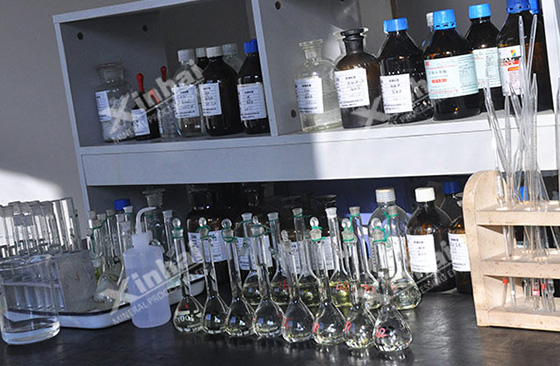
At the present, tin ore flotation agents mainly apply collectors and adjustment agents. The collectors is to change the hydrophobicity among the minerals and adsorbed on mineral surface selectively to improve mineral floatability. The adjustment agents is to adjust the cooperation function to improve or reduce the mineral floatability.
Use the table of contents below to navigate through the guide:
01Tin ore flotation agents -collectors
When processing tin ore by flotation separation process, the common collectors can be divided into 5 kinds: fatty acids, alkylhydroxamic acids, phosphonic acids, alkylsulfosuccinic acids, and splenic acids.
1. Tin ore flotation collectors- fatty acids
The common fatty acids collectors are oleic acid, saponins, oxidized paraffin soap, naphthenic acid, 731 and tall oil, etc. The oleic acid has a strong capture capacity , the dosage of each time and toxicity are small. But it is sensitive to Ca2+ and Fe3+, which will affect its capture capacity. Therefore, it is used under the condition of alkaline or neutral to process tin ore-quartz type minerals. Because the property of tin ore is more and more complex, the oleic acids should be combined with other fatty acids collectors to complete the process.
2. Tin ore flotation collectors- alkylhydroxamic acids
Alkylhydroxamic acids collector is a kind of efficiency chelating agents,and it can used in flotation process of various types of oxidative minerals, such as tin stone and tungstite. Compared with fatty acids and arsenic acids, its toxicity is small but capture capacity is weak. Its price is high. There are two types of alkylhydroxamic acids collectors, they are salyang hydroxamic acid and benzohydroxamic acid.
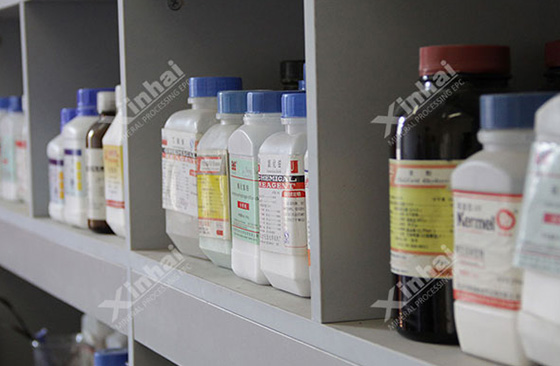
Salyang hydroxamic: it is used widely and have a good capture effect under the alkaline condition. During flotation separation process, it should be add a certain amount of Pb2+ to improve the activation effect.
Benzohydroxamic acid: when using he benzohydroxamic acid, it should be add a certain amount of Fe3+ in the mineral slurry to improve the activation effect, which can get a high recovery rate of tin ore.
3. Tin ore flotation collectors- phosphonic acids
Phosphonic acid trap is used as a substitute for splenic acids. It has the property of anti hard water in the alkaline medium or normal temperature. Its toxicity is small. The phosphonic acids are mainly aliphatic phosphonic acid, generally C6~C8, with strong harvesting ability, but weak selective. It will be affected by Ca2+ and Fe3+.
4. Tin ore flotation collectors- alkylsulfosuccinic acids
Alkylsulfosuccinic acids is similar to fatty acids. It has strong capture capacity and is non-toxic. It has also dispersion function but weak selection ability. It is adsorbed on the mineral surface of tin ore mainly by static electricity,followed by chemical adsorption. There are some kinds of alkysulfosuccinic acids collectors. They are A-22, sulinamide acid and 209 detergent.
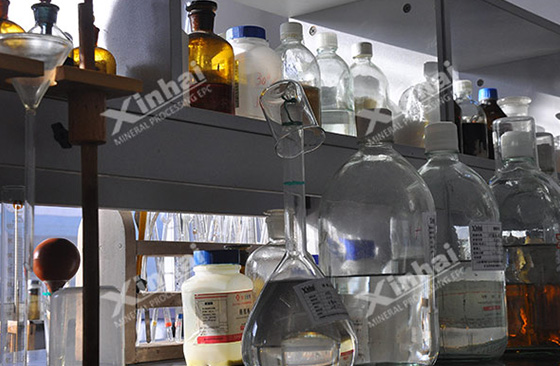
5. Tin ore flotation collectors- splenic acids
During tin ore flotation process, the splenic acids collectors can react with tin ore and form solid compounds on the surface of minerals. The hydrocarbon group is exposed on the surface of minerals, so that the mineral shows hydrophobicity, but there is no such chemical adsorption with gangue minerals, so it has good selectivity and strong capture ability.
02Tin ore flotation agents- adjustment reagent
The adjustment reagents used in tin ore flotation process are to change flotation separation condition and characteristic of mineral surface. According to the function property, the tin ore flotation adjustment reagents can be divided into activators, inhibitors, and pH regulators.
1. Tin ore flotation activators
Activators can make the collectors be absorbed on the mineral surface easily. Meanwhile, it can remove thin inhibition film which will impede collectors action. When processing tin ore by flotation separation technology, the common used activators are sulphuric acid, copper sulfate, sodium sulfate, hydrochloric acid, and soda. Sulphuric acid and hydrochloric acid are used for activating brass and yellow iron in the tin ore. Copper sulfate is used to activate sppherite. Sodium sulfate is used to activate white lead ore. Soda is used to activate malachite, white lead ore and calcite.
2. Tin ore flotation inhibitors
Inhibitors can reduce the mineral flotability. During tin ore flotation process, the inhibitors is applied to impede the flotation of harmful impurities and gauge minerals. If you get various metal minerals after tin ore mixed flotation process, you can add the inhibitors into the ore pulp. Then separate a part of minerals first and restrain other parts of minerals. At the present, the common tin ore inhibitors are inorganic inhibitors and organic inhibitors.
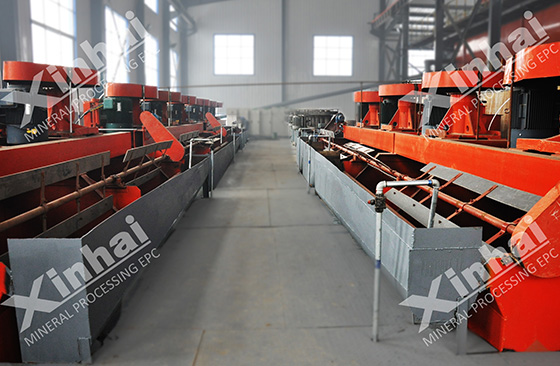
Inorganic inhibitors: water glass, lime, sodium hexasetasate phosphate, fluoroilic acid, sodium sulfide, sodium fluoride, sodium fluoride.
Organic inhibitors: citric acid, oxalic acid, lactic acid, straw cellulose, starch, hydroxymethyl cellulose sodium, phenol, calcium lignosic sulfonate, polymer tanning, dextrin, etc.
When tin ore flotation, water glass is used for restraining silicate minerals. Copper sulfate and quartz activated by lead acetate have better restraining effect. Sodium hexasate phosphate and sodium sulfide can react with multivalent metal cations, like Ca2+、Mg2+, to form all kinds of clathrates. The mineral that contain ions of Ca2+、Mg2+ get be inhibited during flotation process. When oleic acid is used as tin ore collectors, sodium sulfide can restrain the those quartz sand which is activated by Cu2+ and Pb2+ under the alkaline condition.
3. Tin ore flotation pH regulators
The value of pH is a important parameter when separating the tin ore with flotation process. It has a decisive effect. It can change the status of collectors to change the capture capacity of reagents. It can also affect the absorption of collectors on the mineral surface to change the ions composition in the ore pulp.
Therefore, every separation system in tin ore processing has a suitable range of pH value. When using the sodium carbonate to adjust the alkaline of ore pulp, you can use the sulphate acid to acidity of ore pulp. When using salicylic hydroxamic acid, oxamic acid, P86, pineol oil and other agents to make the tin ore beneficiation test, the pH value is among the 6-7. the recovery rate will be ideal.
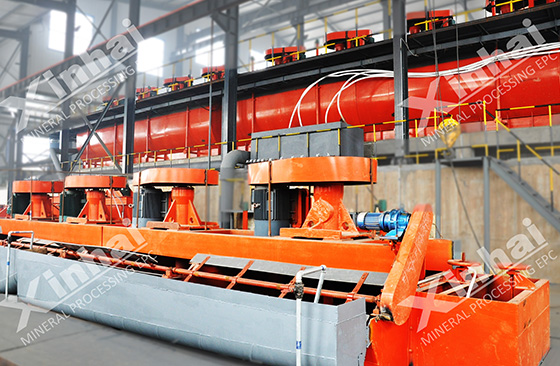
As decreasing of tin ore reserves, the grade of tin ore is also downing. The embedded particles of valuable mineral is fine, which will cause the over grinding. Therefore, it is difficult to separation. It should apply the flotation or combined beneficiation methods to recycle the tin ore concentrates. Thus, the requirements of tin ore flotation agents is very strict, particularly how to choose.
Xinhai suggests to perform tin ore beneficiation test. Based on the result of beneficiation test, design the optimized tin ore flotation process solution and flotation agents. Only in this way can you get the ideal tin ore concentrate recovery rate.


 marketing@ytxinhai.com
marketing@ytxinhai.com  0086 13810327080
0086 13810327080 






































































































 CHAT
CHAT MESSAGE
MESSAGE







